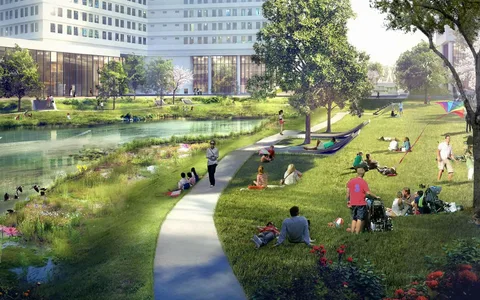Exploring the Competitive Landscape Render Engines in 2025
The competitive landscape render engines market in 2025 is transforming the very way firms operate and conceive, present, and sell their ideas. Increasing expectations have been put in place for presenters to produce brilliantly appealing and realistic images now and then, with rapidity and expediency highly valued. Render engines have become strategic design tools rather than just production software.
The number of engines exhibiting altogether different characteristics and levels of performance gives credence to the importance of information. This blog scopes the new wave of render engines transforming workflows and is reason enough to select the one suitable for the success of your firm.
EXPLORE THE COMPETITIVE LANDSCAPE RENDER ENGINES IN 2025 AND SEE WHICH TOOLS ARE RESHAPING THE FUTURE OF ARCHITECTURAL VISUALIZATION!
Render Engines: A Key Part of the Design Process
Render engines have been integrated into every phase of architectural design. They allow for great design intent to communicate from conceptual thinking to the final presentation. Speed and realism make the important differences between render engines. A client requires more than simple sketches or static 3D models in their mind, where ideas are transformed into reality in the competitive world of render engines.
Top Render Engines Leading in 2025
V-Ray, Twinmotion, Lumion, Enscape, and D5 Render are a few of the rendering tools that have marked their presence in the market as of 2025. Each has its strength. V-Ray is photorealistic, Twinmotion offers real-time updates, and D5 Render charges low fees, before it easy to learn.
The remaining competitive renderers would rather reward passion somewhere between user friendliness and brute performance. It all depends on your company’s goals, high-end marketing visuals, or quick design iterations.
Real Time Rendering Is a Must-Have!
In fast-paced design environments, speed matters. With real-time rendering tools like Enscape and Twinmotion, architects can make immediate changes during client meetings. This live feedback enhances interactions and diminishes drawdown cycles. Therefore, in the already competitive field among render engines, real-time performance has now become an essential factor for client satisfaction and internal efficiency.
Cloud Rendering and Team Collaboration
Rendering engines continue to evolve to meet the needs of remote teams. Cloud rendering makes it possible to process larger files without resorting to high-end local hardware and is a definite boon for small firms and freelancers who need these heavy-duty tools without heavy investment.
In the competitive landscape render engines in 2025, those with cloud features gain strong accessibility and team collaboration over their competitors.
How Rendering Impacts Architecture Firm Marketing
The visuals you produce don’t just help win internal approvals; they power your Architectural Rendering firm public image. In architecture firm marketing, the rendering quality can prove a make-or-break factor in establishing a first impression.
A stunning render or animation walking through a particular design is likely to catch a prospective client’s eye, whether in social media posts or proposals. More firms have been rendering these images for their websites, presentations, and brochures for emotional engagement and symbolism of professionalism.
Supporting Services Enhance Flexibility
Many firms outsource rendering work to professional 3D rendering services when time or resources are limited. These services rely on the same competitive engines, offering fast and polished results. This approach adds flexibility, especially for firms that handle fluctuating project loads. The rise of external service providers also highlights how broad and dynamic the competitive landscape render engines has become.
Balancing Cost and Capabilities
Not all engines are priced equally, and cost plays a big role, especially for smaller firms. Subscription-based models are now common, making it easier to scale without large upfront fees. Some engines also offer free or trial versions. In the competitive landscape render engines, tools that offer flexible pricing while maintaining quality are becoming more attractive to startups and mid-sized studios alike.
What’s Next in Rendering Technology?
Beyond that date, AI, automation, and further integration with design software will drive innovation in render engines. Tools that operate using AI are already speeding up material selection, lighting adjustment, and scene optimization. In the future, render engines may grow so wise, think by themselves, and leave it up to architects to dream and design. Not very many are interested in keeping pace with changes in such a dynamic field to keep themselves competitive and relevant in their profession.
READY TO UPGRADE YOUR VISUALS? CHOOSE A RENDER ENGINE THAT ALIGNS WITH YOUR WORKFLOW AND MARKETING GOALS!
Conclusion
The competitive landscape render engines is redefining work, delivery, and growth in architectural firms. The right engine would improve efficiency, customer satisfaction, and marketing potential. Success in 2025 won’t just be about having design talent; it’s about having the technology to support that vision. To stay ahead of an industry focused on visuals and presentation, selecting the appropriate render engine is a wise place to begin. Want to future-proof your architecture firm? Explore rendering engines that support both creativity and speed.





